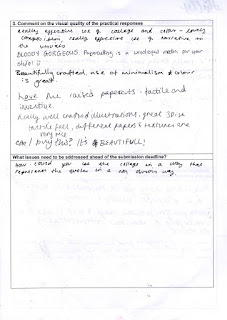So for the other side of my visual journal I decided to do something a little different. I wanted to look at the way in which fairy tales have been constantly reinterpreted and modified over the years and thought an effective way to do this visually would be to take an image and re-draw it over and over, altering each outcome from the last slightly, but making sure to keep the subject matter the same and quite obvious.
I chose an image that I thought would be interesting to draw and was a key feature in fairy tales or one fairy tale specifically. I chose to draw a wolf, a key character in Little Red Riding Hood.
I started off with a semi-realistic drawing, expecting the outcomes to become more experimental and interesting over the course of the journal. From the pencil drawings, I moved on to using pen and then paper-cut collage, changing the line quality, scale and technique.
I proceeded to then move into digital software for the last quarter of the journal as a means of reflecting the way in which fairy tales have been largely distributed through TV, film and various other technological platforms. I found working digitally a lot of fun and tried to work exhaustively with the image I had created using vectors. I played with layers, incorporated colour and used print textures to express the underlying traditionalism of fairy tales.
I feel as though I have effectively demonstrated and experimented with the use of line, shape, colour, texture and collage.





